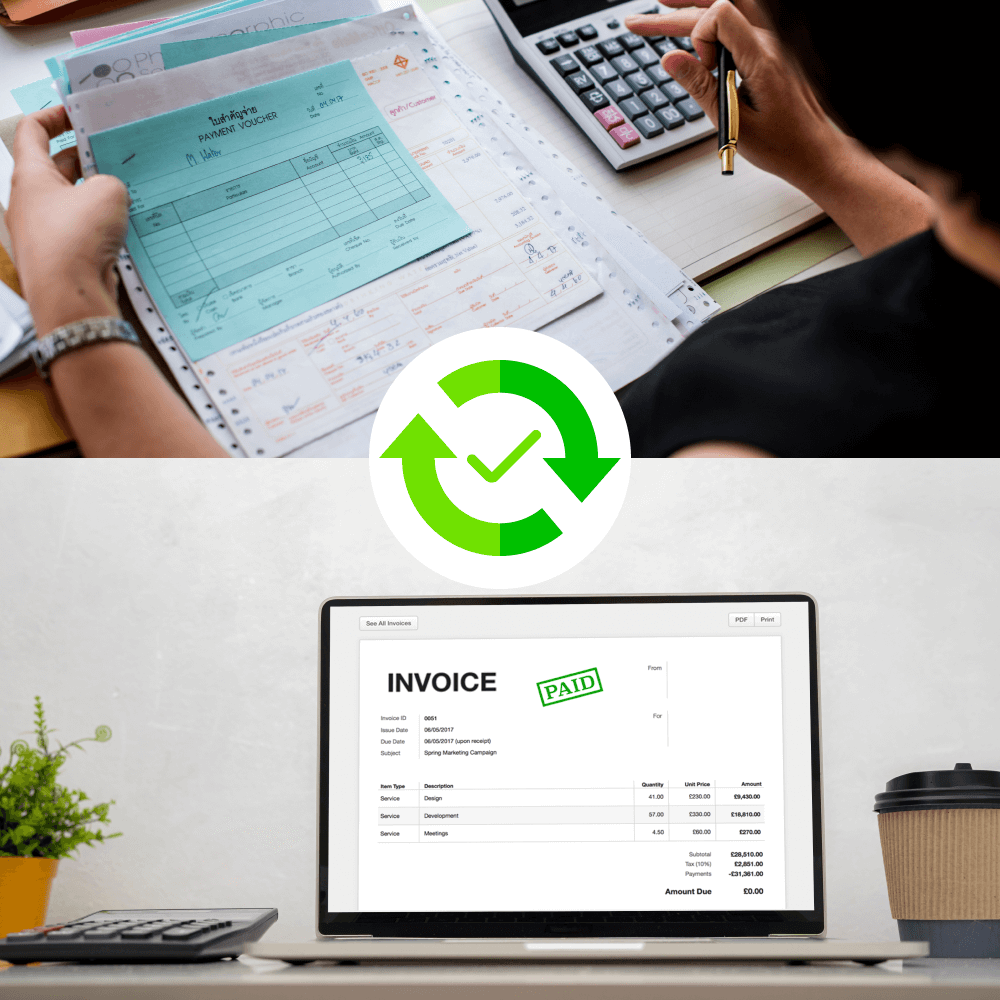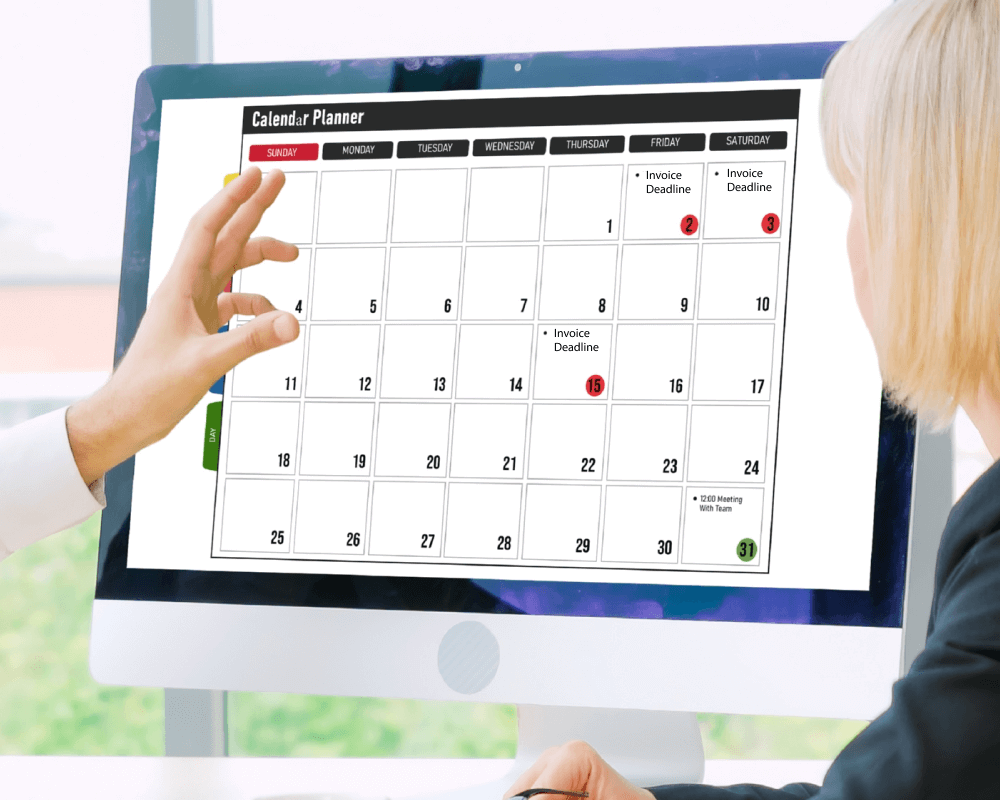e-Invoicing has been introduced to move a step towards digitization and a tech-driven environment. The crucial aim of the e-Invoicing system is to curb tax evasion. Other e-Invoicing benefits are transparency and efficiency in business processes, a tax administration system, proper compliance with rules and regulations, and correct reporting to various stakeholders.
There are various e-Invoicing challenges as well which may affect the business process in the short term. However, if the e-Invoicing process and systems are adopted and seamlessly integrated by businesses in their processing cycle then it would bring ease in its process cycle and help in proper compliance with government rules and regulations in the long run.
This blog explains the advantages and possible challenges caused due to the implementation of the e-Invoicing system. Before learning about the advantages and disadvantages of e-Invoicing, let’s understand about e-invoice.
What is e-Invoicing?
E-Invoicing, also known as electronic invoicing, is the reporting and authentication of invoices, generated by a registered person on the existing billing system, on Invoice Registration Portal.
When invoices are authenticated by the IRP, a unique IRN (Invoice Registration Number) is generated and invoices are digitally signed and a QR code is added to it, which is then called the generation of an e-invoice.
Currently, e-Invoicing is mandatory for B2B transactions having AATO of more than 5 crores including entities registered in SEZ.
E-Invoicing Benefits
Streamlined Compliance and improved reporting

E-Invoicing simplifies the GST compliance process by facilitating one-time reporting of B2B transactions, thereby reducing the chance of errors in invoices. Once the invoice data has been uploaded and authenticated on IRP, the invoice information will get transferred to the GST portal and e-way bill portal which will be auto-populated in GSTR-1 and e-way bills thereby reducing the error occurring due to manual data entry, helps in faster processing of returns or other documents and enhance reporting.
Reduced Gaps in reconciliation
With the integration of the GST portal, e-invoice portal, e-way bill portal, and that of the registered person’s system, all required information is shared seamlessly and gets auto-populated wherever required and the chances of mismatch in data which earlier occurred due to manual punching of entries or missing invoices or entries will be minimized thereby reducing the gaps in reconciliations (GSTR-1 vs GSTR-3B, GSTR2B vs Books of accounts, GSTR-1 and GSTR-3B vs books of accounts, etc.) which are important for tax payment and ITC availment.
Mitigation of fraudulent Invoices
The invoices issued by the supplier are authenticated on IRP, any fraudulent or misleading information provided in invoices will be identified and the invoice will not get validated. Further e-way bill is auto-populated based on e-invoice information which reduces the risk of transportation of goods and issuance of invoices to different parties, or only issuance of invoices without actual transportation of goods for fraudulent availment of ITC.
Reduced Tax Evasion
With e-Invoicing, every transaction conducted by businesses becomes more transparent and can be easily traced. This helps tax authorities to keep track of crucial transactions to detect any malpractice and prevent any move towards tax evasion more effectively,
Easier to generate an e-way Bill
When the invoices are reported on the IRP, the data of the invoice is automatically transferred to the e-way bill portal, and the details in Part A of an e-way bill will get uploaded automatically from the e-invoice. Without any manual punching and error, information is auto-populated in an e-way bill due to the integration of the e-invoice portal with the e-way bill portal. Now the taxpayer just needs to update Part B of the e-way bill; the details of the transporting vehicle, which makes it quick to generate an e-way bill.
Allows interoperability
E-invoice generated from IRP is not just a document but is a set of data that can be made available digitally to any required person. As the e-Invoices are generated in a standard format, the invoice generated from one software can be read by a different software as well. With the e-invoice portal being the facilitator in between, the registered supplier can automatically provide invoice data directly to the recipient’s system.
Improved Input Tax Credit Claims (ITC)
ITC can be claimed to the extent it is available in GSTR-2B. When the invoice is reported on the IRP, the data of the invoices are transferred to the GST portal, and the field of GSTR-1 is auto-populated which is reflected in GSTR-2B of the recipient. Therefore, during the reconciliation of GSTR-2B with the purchase entries accounted in ERP, the chances of mismatch due to errors in manual entry in GSTR-1 will be eliminated and will help in claiming accurate and correct ITC.
Faster access to Formal Credit routes

Since e-Invoices are authenticated by the IRP, the information provided in such invoices can be considered more reliable and accurate than any other documents, which helps in faster access and processing of invoice discounting or invoice financing from banks or other financial institutions.
e-Invoice Implications for Businesses
Due to the tech-driven competitive market, businesses are already moving towards automation and digitization for the efficiency of business processes, to ensure data security measures and compliance with law. For such businesses, the e-Invoicing system won’t entail many changes to the way businesses are issuing invoices presently and would also continue to see the physical or electronic (PDF, etc.) output of the invoices in the same manner as it is today.
Necessary changes to enable such reporting of invoices to IRP and obtain IRN will have to be made by ERP/Accounting and Billing Software providers in their respective software or the taxpayer can take services of GSPs as well, to report invoice data to IRP.
Challenges of e-Invoices
Tax evasion in B2C transactions
E-Invoicing has been implemented only for B2B transactions. An e-invoice is not required when goods or services are provided to end customers i.e., for B2C transactions. However, QR codes for B2C transactions are mandatory for businesses having aggregate turnover of Rs. 500 crore or more but they cannot provide complete accuracy and authenticity of invoices. Therefore, tax curbing can be done in such transactions which can affect the tax collection of the government as well as the business of other genuine organizations.
Cancellation and amendments of e-Invoices
E-Invoices cannot be modified or corrected. It needs to be cancelled even for a small error that to within 24 hours of its generation provided that the e-way bill is not generated. After 24 hours, no changes can be made to the IRP portal. this invoice can be correctly reported at the time of filing of GSTR-1 on the GST portal. Further, IRN cannot be generated for cancelled invoice numbers therefore, along with correcting the error taxpayer also has to change the invoice number and perform the entire process again which is tedious and time-consuming.
Storing of e-Invoices
E-Invoices are stored in IRP for only 24 hours after their generation, therefore, the taxpayer has to arrange and integrate an alternate system or solution for archival of invoices.
Increased number of reconciliations
The financial and accounting departments were already performing many reconciliations for accurate and correct reporting and tax compliance. Now with e-Invoicing, businesses have to perform more reconciliations like e-Invoices, and regular invoices v/s GSTR-1, e-invoice generated v/s IRN generated, e-Invoices v/s e-way bill, e-Invoices and regular invoices received v/s GSTR-2B, etc. ensuring compliance with e-Invoicing regulations.
Compliance Burden
Understanding the rules and regulations and exactly what the government requires is at times very difficult. With numerous amendments in format and requirements of e-Invoicing, it is difficult for businesses to understand the exact government requirements and follow them accordingly which will result in a lack of e-Invoicing compliance.
Implementation challenges
With a lack of knowledge, experience, and training with technology, businesses have struggled to integrate this new system into their everyday functioning. It would take time for the IT team to choose the method of generation of e-invoice to its integration, learning, and testing before adapting it to its everyday functioning. Further, errors while using such a system could also put businesses at risk of receiving fines or penalties.
Conclusion
Navigating through the advantages and challenges of e-Invoicing, taxpayers should have a strong understanding of legal requirements, a commitment to digital transformations, and proactive efforts to align with tax authorities. To properly reap the benefits and overcome certain inevitable challenges of e-Invoicing, organizations need to be completely aware of the knick-knacks of this system. As businesses continue to evolve and technology consistently advances, staying up to date with the latest digital trends and regulatory changes will remain vital for sustainable business success.